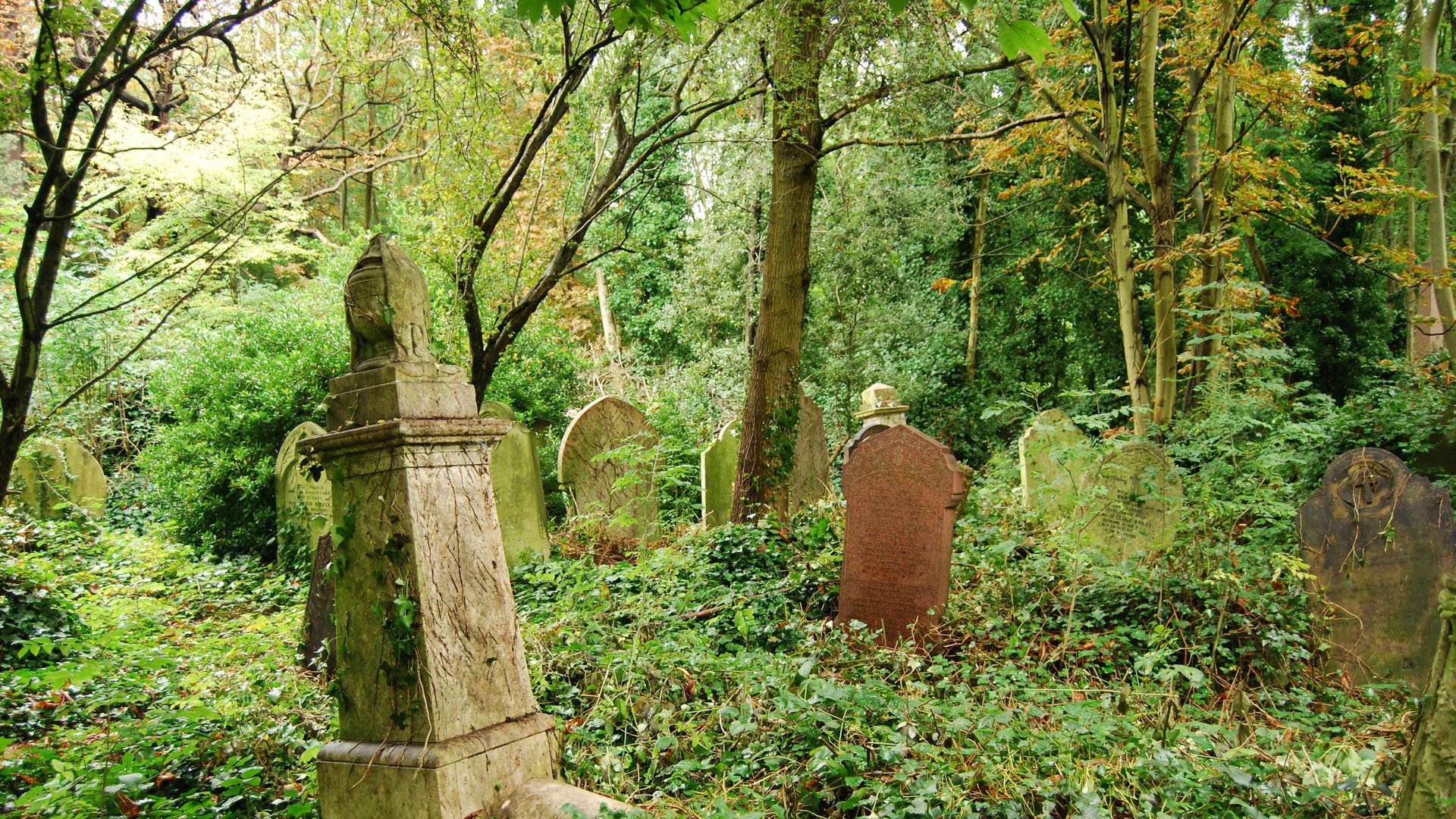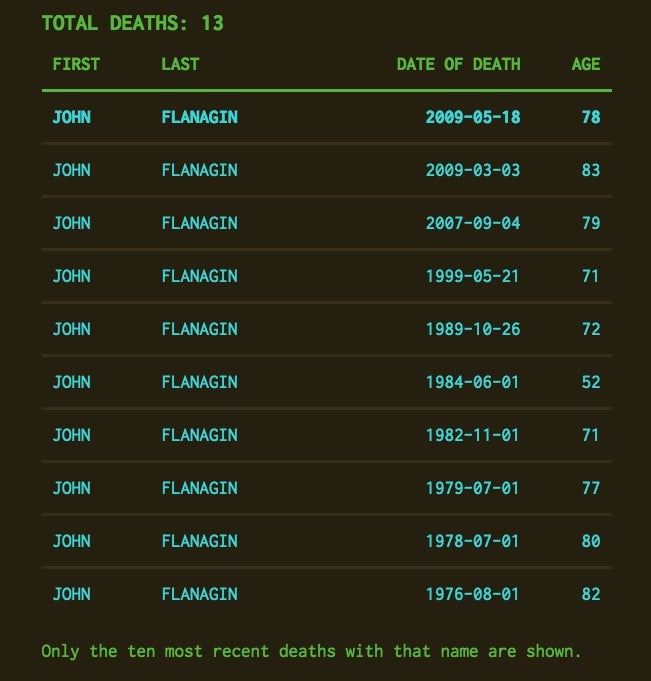This digital graveyard will tell you how many times your name has “died”
Here’s something that can make you feel very small. Or very large.


Here’s something that can make you feel very small. Or very large.
The New Republic has published an essay by Paul Ford exploring “the Social Security administration’s list of America’s dead.” With the information harvested, they’ve compiled this searchable database of recorded deaths in the United States, which stretches back to 1935 and contains over 94 million entries. Input your name to check just how many other “John Smiths” or “Jane Does” have expired before you, if any.
I have two names. Sort of. Officially speaking, my full name is John Mead Flanagin, Jr.—named for my father, who in turn was named for his great-uncle. I go by “Jake,” because having two Johns in a single household would have been confusing; and I suppose my parents thought “Jack” was cliché. (Ironically, Jake turned out to be one of the most popular boy’s names for 1990—the year of my birth.)
If I search TNR’s “Database of the Dead” for “John Flanagin,” I feel pretty small. A total of 13 John Flanagins have died in the United States, according to the SSA, ten of them in the last four decades.

If I search “Jake Flanagin,” I feel pretty important! No one named Jake Flanagin has ever died in the United States, as far as the government’s concerned.

For centuries, the only institutions to record death in the West were churches. In fact, in some parts of the world, a single chapel might hold your birth, baptism, confirmation, marriage, and death documentation all in one place. Perhaps it’s a sign of the times that we’ve turned to today’s great cultural adhesive—the Internet—to store the stories of our lives. We’ve built a digital graveyard, where data points are the new gravestones and programmers are the new coroners.